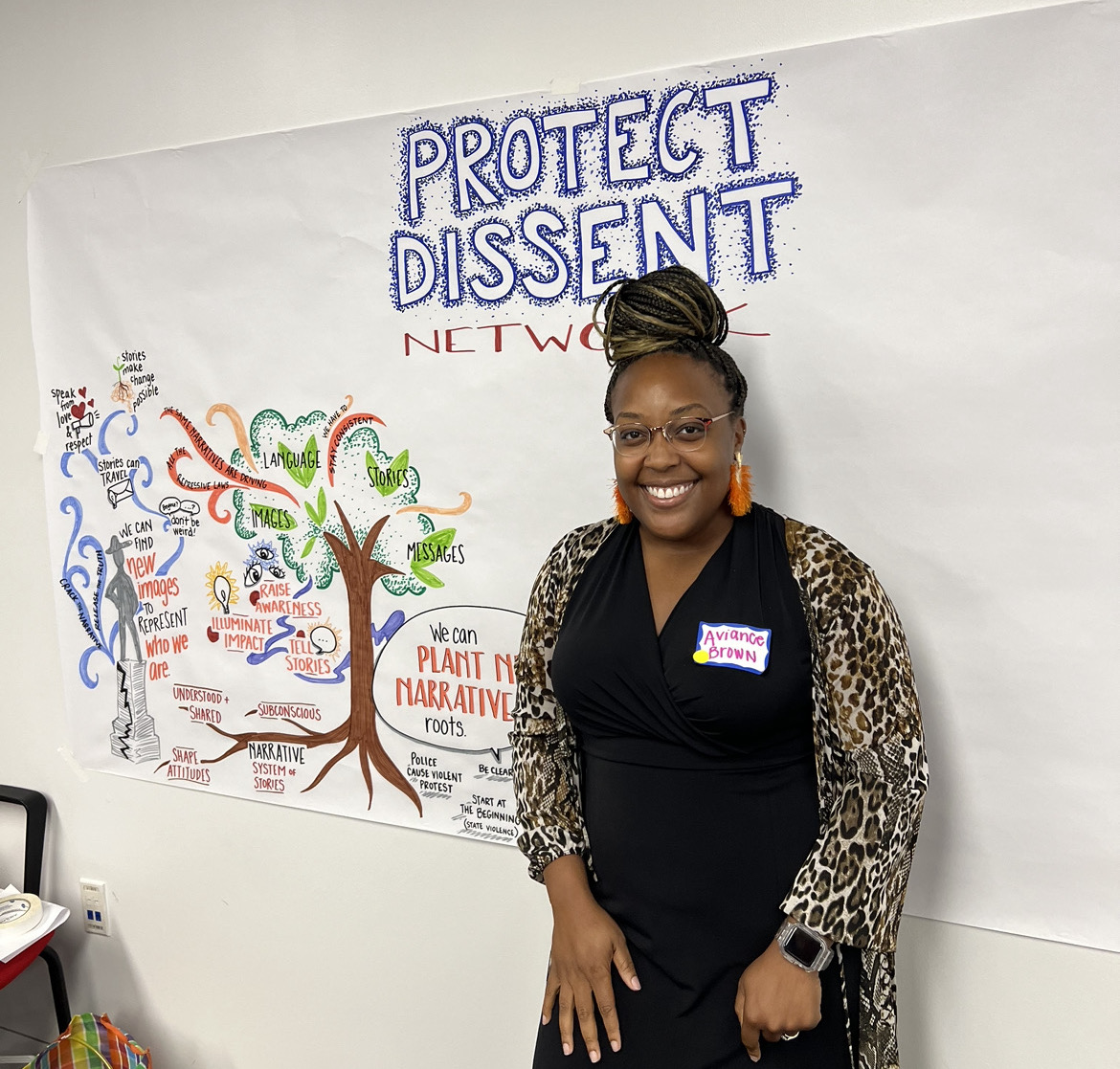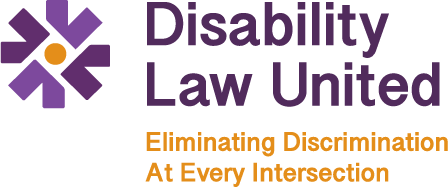
Written by Aviance Brown, Disability Law United Staff Attorney
Public protest is one of the most effective methods of disability advocacy. This was one of the prime messages which dynamic speaker and longtime disabled advocate Anita Cameron shared during the Protect Dissent Conference, convened by the Proteus Fund, a funder of Disability Law United’s work.
The conference convened groups and advocates who are seeking to defend protest rights, with a priority on state and local efforts led by communities of color. More than 20 civil rights organizations met to discuss ways in which we are engaged in protecting the right to protest.
Hosted in Washington, D.C. from August 3 to 4, the conference focused on key issues around the right to protest including understanding law enforcement tactics like policing and prosecutions, which are designed to chill protests across the nation.
We took a deep dive into current trends on critical infrastructure bills and the forces behind them such as Cop City, political prosecutions, the rise of attacks on boycotts and emerging violent responses to protests at school board meetings. Lawyers met to discuss litigation strategies being utilized nationwide to challenge attempts at weakening public protest. These attempts include less lethal weapons provisions used against protesters, rapidly growing anti-riot provisions aimed at criminalizing protesters, and ordinances that severely limit where protesters are allowed to exercise their rights. We also spent time developing strategies for proactive protest defense.
One of the more powerful moments was hearing Anita Cameron share her story of being arrested more than 100 times while protesting for disability rights. She discussed one of the most prominent disability rights protests – the Capitol Crawl of 1990 – and the need to continue to fight for disability justice.
Over the course of the conference, I connected with dynamic litigators from across the country who are working relentlessly to protect the right to protest. I learned new techniques that Disability Law United should employ in our current case White vs. Sacramento Police Department for its disparate treatment of demonstrators, including disabled demonstrators, who were protesting police violence against Black and brown people after the murder of George Floyd. I was also invited to speak on the “Legal Challenges to Protect the Right to Protest” panel about Disability Law United’s White case and the importance of including disabled people in the movement to protect the right to protest.
My favorite session was about safety and security for protesters because it resonated with the concerns raised by our clients who have been subjected to extreme drone surveillance by Sacramento Police Department since 2020. We explored safety and security practice infrastructure that is comprehensive to true movement work and what organizations proactively need to do to protect their work and communities. As a visual learner, I really appreciated the artist who was drawing visuals that depicted the enriching conversations happening in the room.
I want to especially thank the Proteus Fund for inviting Disability Law United to participate in this conference. I look forward to future opportunities to connect with members of the fund.
